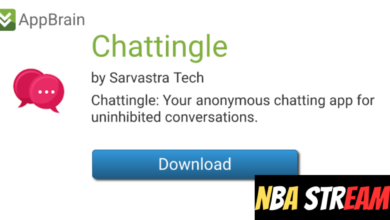Introduction
In the ever-evolving digital media landscape, alternative news platforms have gained significant traction. One such platform is Before It’s News (BIN), a user-generated news site that allows individuals to share and publish articles freely. Unlike mainstream media outlets, BIN prides itself on providing an open-source platform where contributors can voice their opinions, discuss controversial topics, and report on events without traditional editorial oversight.
With the rise of misinformation and fake news concerns, Before It’s News has been both praised and criticized. Advocates argue that it represents a true form of free speech and citizen journalism, while critics claim it often spreads unverified and misleading information. Understanding the role of alternative news sources like BIN is essential for media consumers in today’s information-driven world. This article explores the workings of Before It’s News, its influence on the media landscape, the controversies surrounding it, and what the future holds for independent news platforms.
Understanding “Before It’s News”
1.1 What Is “Before It’s News”?
Before It’s News was founded in 2008 with the mission of providing an open platform where anyone could contribute and share news without censorship. Unlike traditional media organizations with structured editorial teams, BIN operates as a user-driven site where articles are published based on user submissions rather than journalistic verification.
The website covers a wide range of topics, from politics and science to conspiracy theories and the paranormal. By allowing unrestricted contributions, BIN positions itself as an alternative to mainstream media, which many critics argue is controlled by corporate interests and political biases. However, this lack of oversight has led to concerns over the accuracy and credibility of its content.
1.2 How “Before It’s News” Works
The platform operates similarly to an open forum, where users can submit articles without the need for journalistic credentials. Once an article is submitted, it is published immediately or after minimal review, making it one of the most accessible platforms for independent reporting.
Unlike mainstream news sites that employ fact-checkers and editors, BIN relies on readers to determine the credibility of the content. Articles often gain traction based on shares, comments, and user engagement rather than rigorous fact-checking. This decentralized model allows for diverse perspectives but also raises concerns about misinformation.
The Role of “Before It’s News” in the Media Landscape
2.1 Alternative News vs. Mainstream Media
The rise of alternative news platforms like Before It’s News has challenged traditional journalism. Many readers seek alternative sources due to perceived biases in mainstream media. While traditional outlets rely on corporate funding and government regulations, BIN offers a platform where anyone can report on global events, unfiltered.
However, mainstream media operates under strict journalistic standards, ensuring that news is verified before publication. The absence of such vetting on BIN means that while users can access uncensored content, they also face a higher risk of encountering misleading or false information. This dichotomy has led to an ongoing debate about the role of alternative news in shaping public opinion.
2.2 Common Topics Covered on BIN
Before It’s News covers a vast range of topics, many of which are not typically featured in mainstream media. These include government conspiracies, UFO sightings, alternative medicine, and controversial political theories. The platform has gained popularity among those seeking information outside traditional news narratives.
Despite its diverse content, the site has been criticized for promoting sensationalist and unverified stories. While some articles provide unique insights and independent perspectives, others contribute to misinformation and public confusion. The balance between free speech and responsible journalism remains a key issue for alternative news platforms.
2.3 The Appeal of “Before It’s News”
The platform’s appeal lies in its promise of unfiltered news and unrestricted access to information. Many users appreciate the opportunity to explore topics that mainstream media may overlook or suppress. Additionally, BIN fosters a sense of community where individuals can engage in discussions and share their viewpoints.
However, the challenge remains in distinguishing between credible reports and misleading narratives. The site’s reliance on user-generated content means that readers must take extra steps to verify information before accepting it as fact. The platform’s popularity reflects the growing demand for alternative perspectives in an era of increasing media skepticism.
Controversies and Criticisms
3.1 Issues of Misinformation and Fake News
One of the biggest criticisms against Before It’s News is its tendency to spread misinformation. Due to the lack of editorial oversight, many articles published on the platform contain unverified claims, misleading narratives, or conspiracy theories.
Examples include reports of false scientific discoveries, political propaganda, and fabricated events. Critics argue that such content can contribute to public misinformation and erode trust in legitimate news sources. While some articles may be based on genuine concerns, the lack of fact-checking makes it difficult for readers to differentiate between truth and fiction.
3.2 The Debate on Free Speech vs. Responsible Journalism
The platform raises important questions about the balance between free speech and responsible journalism. While many defend BIN’s open-source model as a form of democratic news-sharing, others believe it should implement stricter verification processes to maintain credibility.
Regulating alternative news sites without infringing on free speech remains a challenge. The lack of accountability in platforms like BIN makes it easy for misinformation to spread rapidly, influencing public perception on critical issues.
The Future of Alternative News and “Before It’s News”
4.1 The Growing Influence of Independent News Platforms
As trust in mainstream media continues to decline, the demand for alternative news sources is expected to grow. Decentralized platforms, blockchain-based news sites, and AI-driven verification tools may shape the future of independent journalism.
4.2 Potential Changes and Improvements for BIN
To address credibility concerns, Before It’s News could implement AI-driven fact-checking, enhance user verification, and introduce quality control measures. Future regulations may also impact how alternative news sites operate, ensuring a more balanced and trustworthy media environment.
Conclusion
Before It’s News represents a significant shift in the way news is consumed and shared. While it provides a platform for diverse voices and alternative perspectives, it also raises concerns regarding misinformation and credibility. As the media landscape continues to evolve, the challenge lies in balancing free speech with responsible journalism. Consumers must remain vigilant, question sources, and verify facts to make informed decisions in an increasingly complex information age.
Also Read: arcenturf




